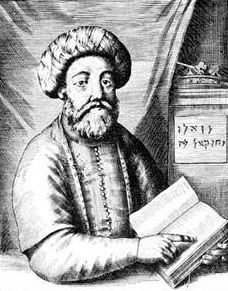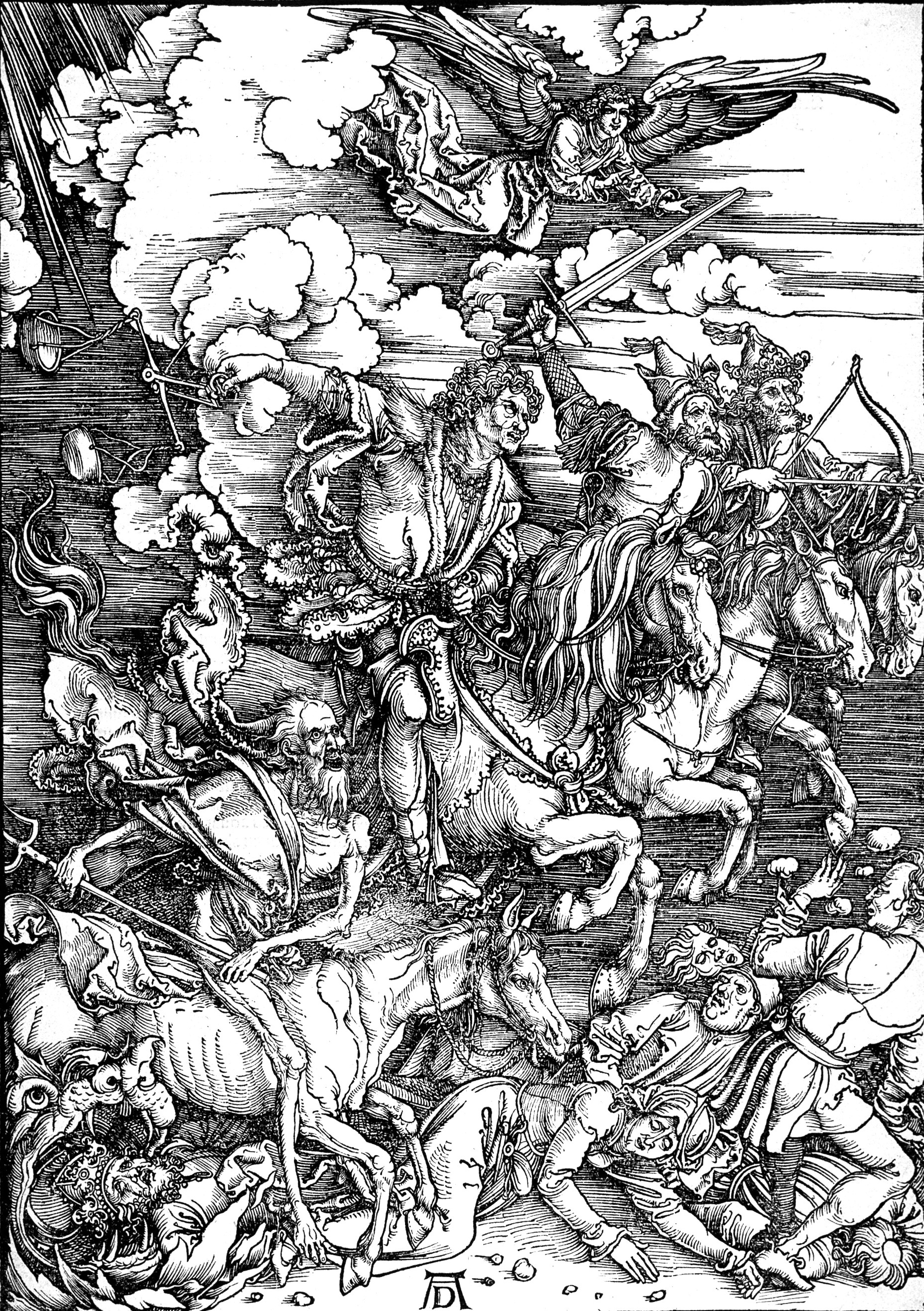|
Moses Of Crete
Moses of Crete was a Jewish Messiah claimant and apocalyptic prophet in the 5th century A.D. After the failed Bar Kokba war, there was an end to Messianic movements for several centuries. However, the hope of a coming messiah nonetheless continued. In accordance with one interpretation of the Talmud, the Messiah was expected in 440 (Sanh. 97b) or 471 ('Ab. Zarah 9b). This expectation in connection with the disturbances in the Roman empire attendant upon invasions may have raised hopes in a messiah claimant who appeared about this time in Crete, and who won the Jews there to his movement. He called himself Moses, and promised to lead the people, like the ancient Moses In Abrahamic religions, Moses was the Hebrews, Hebrew prophet who led the Israelites out of slavery in the The Exodus, Exodus from ancient Egypt, Egypt. He is considered the most important Prophets in Judaism, prophet in Judaism and Samaritani ..., dry-shod through the sea back to their old Holy Land of Israel ... [...More Info...] [...Related Items...] OR: [Wikipedia] [Google] [Baidu] |
Jewish Messiah Claimants
The Messiah in Judaism means ''anointed one''; it included Jewish priests, prophets and kings such as David and Cyrus the Great. Later, especially after the failure of the Hasmonean Kingdom (37 BCE) and the Jewish–Roman wars (66–135 CE), the figure of the Jewish Messiah was one who would deliver the Jews from oppression and usher in an '' Olam HaBa'' ("world to come"), the Messianic Age. Some people were looking forward to a military leader who would defeat the Seleucid or Roman enemies and establish an independent Jewish kingdom. Others, like the author of the Psalms of Solomon, stated that the Messiah was a charismatic teacher who would give the correct interpretation of Mosaic law, restore the monarchy of Israel, and judge mankind. This is a list of notable people who have been said to be the Messiah ben David, either by themselves or by their followers. The list is divided into categories, which are sorted according to date of birth (where known). 1st century *Jesus ... [...More Info...] [...Related Items...] OR: [Wikipedia] [Google] [Baidu] |
Apocalypticism
Apocalypticism is the religious belief that the Eschatology, end of the world is imminent, even within one's own lifetime. This belief is usually accompanied by the idea that civilization will soon come to a tumultuous end due to some sort of catastrophic global event. Apocalypticism is one aspect of eschatology in certain religions, the part of theology concerned with the final events of human history, or the ultimate destiny of humanity (societal collapse, human extinction, and so on). Religious apocalypticism Religious views and movements often focus on cryptic revelations about a sudden, dramatic, and cataclysmic intervention of God in human history; the judgment of humankind; the salvation of the faithful elect; and the eventual rule of the elect with God in Heaven and/or in a renewed Earth. Arising originally in Zoroastrianism, apocalypticism was developed more fully in Jewish eschatology, Judaic, Christian eschatology, Christian, and Islamic eschatology, Islamic eschato ... [...More Info...] [...Related Items...] OR: [Wikipedia] [Google] [Baidu] |
Bar Kokhba Revolt
The Bar Kokhba revolt (132–136 AD) was a major uprising by the Jews of Judaea (Roman province), Judaea against the Roman Empire, marking the final and most devastating of the Jewish–Roman wars. Led by Simon bar Kokhba, the rebels succeeded in establishing an independent Jewish state that lasted for several years. The revolt was ultimately crushed by the Romans, resulting in the near-depopulation of Judea through large-scale killings, mass enslavement, and the displacement of many Jews from the region. Resentment toward Roman rule in Judaea and nationalistic aspirations remained high following the destruction of Jerusalem during the First Jewish–Roman War, First Jewish Revolt in 70 AD. The immediate triggers of the Bar Kokhba revolt included Emperor Hadrian's decision to build ''Aelia Capitolina''—a Colonia (Roman), Roman colony dedicated to Jupiter (god), Jupiter—on the ruins of Jerusalem, extinguishing hopes for the Temple's reconstruction, as well as a possible ban o ... [...More Info...] [...Related Items...] OR: [Wikipedia] [Google] [Baidu] |
Moses
In Abrahamic religions, Moses was the Hebrews, Hebrew prophet who led the Israelites out of slavery in the The Exodus, Exodus from ancient Egypt, Egypt. He is considered the most important Prophets in Judaism, prophet in Judaism and Samaritanism, and one of the most important prophets in Christianity, Prophets and messengers in Islam, Islam, the Manifestation of God (Baháʼí Faith)#Known messengers, Baháʼí Faith, and Table of prophets of Abrahamic religions, other Abrahamic religions. According to both the Bible and the Quran, God in Abrahamic religions, God dictated the Mosaic Law to Moses, which he Mosaic authorship, wrote down in the five books of the Torah. According to the Book of Exodus, Moses was born in a period when his people, the Israelites, who were an slavery, enslaved minority, were increasing in population; consequently, the Pharaohs in the Bible#In the Book of Exodus, Egyptian Pharaoh was worried that they might ally themselves with New Kingdom of Egypt, Eg ... [...More Info...] [...Related Items...] OR: [Wikipedia] [Google] [Baidu] |
Jewish Encyclopedia
''The Jewish Encyclopedia: A Descriptive Record of the History, Religion, Literature, and Customs of the Jewish People from the Earliest Times to the Present Day'' is an English-language encyclopedia containing over 15,000 articles on the history, culture, and state of Judaism up to the early 20th century. The encyclopedia's managing editor was Isidore Singer and the editorial board was chaired by Isaac K. Funk and Frank H. Vizetelly. The work's scholarship is still highly regarded. The American Jewish Archives deemed it "the most monumental Jewish scientific work of modern times", and Rabbi Joshua L. Segal said "for events prior to 1900, it is considered to offer a level of scholarship superior to either of the more recent Jewish encyclopedias written in English." It was originally published in 12 volumes between 1901 and 1906 by Funk & Wagnalls of New York, and reprinted in the 1960s by KTAV Publishing House. It is now in the public domain. Conception a ... [...More Info...] [...Related Items...] OR: [Wikipedia] [Google] [Baidu] |
Socrates Of Constantinople
Socrates of Constantinople ( 380 – after 439), also known as Socrates Scholasticus (), was a 5th-century Greek Christian church historian, a contemporary of Sozomen and Theodoret. He is the author of a ''Historia Ecclesiastica'' ("Church History", Ἐκκλησιαστική Ἱστορία) which covers the history of late ancient Christianity during the years 305 to 439. Life He was born in Constantinople. Even in ancient times, nothing seems to have been known of his life except what can be gathered from notices in his ''Historia Ecclesiastica'', which departed from its ostensible model, Eusebius of Caesarea, in emphasizing the place of the emperor in church affairs and in giving secular as well as church history. Socrates' teachers, noted in his prefaces, were the grammarians Helladius and Ammonius, who came to Constantinople from Alexandria, where in 391 they had been involved in a violent revolt that culminated in the destruction of the Serapeum of Alexandria. It is ... [...More Info...] [...Related Items...] OR: [Wikipedia] [Google] [Baidu] |
John Of Nikiû
John of Nikiû (fl. 680–690) was an Egyptian Coptic bishop of Nikiû (Pashati) in the Nile Delta and general administrator of the monasteries of Upper Egypt in 696. He is the author of a ''Chronicle'' extending from Adam to the end of the Muslim conquest of Egypt. John of Nikiû's ''Chronicle'' contains important historical details otherwise unknown. Life There are two main sources for John's life. The first is the '' History of the Patriarchs'' by Severus, Bishop of Al-Ashmunyn ( Heliopolis). This draws on two originally independent biographies that mention John: those of Pope Isaac of Alexandria (690-692 CE) and Pope Simeon I of Alexandria (692-700 CE). The second source is the Life of Isaac of Alexandria composed by John's successor as bishop of Nikiu, Mena of Nikiu, between 697 and 700 CE.Yirga, Felege-Selam Solomon.The Chronicle of John of Nikiu: Historical Writing in Post-Roman Egypt (Ph.D. dissertation, Ohio State University, 2020). According to the ''History of the ... [...More Info...] [...Related Items...] OR: [Wikipedia] [Google] [Baidu] |
Donna Kossy
Donna J. Kossy (born May 18, 1957) is an American writer, zine publisher, and online used book dealer based in Portland, Oregon. Specializing in the history of "forgotten, discredited and extreme ideas", which she calls "crackpotology and kookology", she is better known for her books ''Kooks: A Guide to the Outer Limits of Human Belief'' (1994, featuring the first biography of Francis E. Dec) and ''Strange Creations: Aberrant Ideas of Human Origins from Ancient Astronauts to Aquatic Apes'' (2001). Kossy was also the founder and curator of the Kooks Museum (1996–1999, online), and the editor-publisher of the magazine ''Book Happy'' (1997–2002, about "weird and obscure books"). Described by ''Wired'' as "an expert on kooks hohas a genuine, if sometimes uncomfortable, affection for her subjects", Kossy wrote books reviewed in publications ranging from '' Fortean Times'' to ''New Scientist''. Journalist Jonathan Vankin named her "the unchallenged authority on, well, kooks", an ... [...More Info...] [...Related Items...] OR: [Wikipedia] [Google] [Baidu] |
5th-century Apocalypticists
The 5th century is the time period from AD 401 (represented by the Roman numerals CDI) through AD 500 (D) in accordance with the Julian calendar. The 5th century is noted for being a period of migration and political instability throughout Eurasia. It saw the collapse of the Western Roman Empire, which came to a formal end in 476 AD. This empire had been ruled by a succession of weak emperors, with the real political might being increasingly concentrated among military leaders. Internal instability allowed a Visigoth army to reach and ransack Rome in 410. Some recovery took place during the following decades, but the Western Empire received another serious blow when a second foreign group, the Vandals, occupied Carthage, capital of an extremely important province in Africa. Attempts to retake the province were interrupted by the invasion of the Huns under Attila. After Attila's defeat, both Eastern and Western empires joined forces for a final assault on Vandal North Africa, but t ... [...More Info...] [...Related Items...] OR: [Wikipedia] [Google] [Baidu] |




